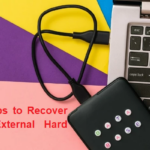Unless you’ve been living under a rock for the last two years, you are undoubtedly aware that there are supply chain issues everywhere. If it isn’t the high cost of fuel, theft, or supply chain bottlenecks causing problems, it’s manufacturing issues. When it’s not manufacturing issues, it’s transportation issues. Transportation issues are something that a company can have complete control over using certain types of tools. To keep supplies and cargo in transit in good condition, it behooves any supply chain manager to monitor for vibrations, impacts, and other potential damage that can happen along the way. If cargo survives the journey without any trouble, you have a happy customer. In this guide, we’ll cover the importance of monitoring cargo and how to prevent impact damage along your supply chain.
Why Monitoring Matters
Damaged goods often need to be repaired or replaced. That spells trouble for most organizations because the costs associated with repair/replacement can lead to increased expenses. That’s a big problem when you’re trying to navigate an uncertain market and changing economy. Impact monitoring for your cargo matters for supply chain resilience, preventing disasters, and helping your customers get their goods without failure. Impact monitoring is critical to ensuring the resilience of your supply chain and preventing damage to your cargo (especially if it’s large cargo, like transformers). It can be done in numerous ways, including utilizing gadgets/technology, planning routes carefully, and enforcing compliance standards for everyone involved in the supply chain as the organization.
Easy To Use Monitoring Devices
To keep track of any unexpected damage, mishandling, or other unforeseen problems along your supply routes, it’s prudent to use an impact indicator device with every shipment. An impact indicator is a deceptively simple device that’s easy to use and implement on your cargo. By tracking the movement and condition of your cargo, you can quickly identify any potential issues and take corrective action before they cause problems. This helps ensure that your customers always receive their goods without issue or damage. Impact indicators are serialized, tamper-proof, and will turn red if it registers an impact. This means that it’s easy to assess them and try to figure out what caused the damage in the first place. Most impact monitors can be armed within the field, withstand high amounts of force, and come in different shapes and sizes to accommodate whatever you are transportation needs might be.
Track Unexpected Vibrations
Vibrations can cause significant damage to your cargo. From breaking items apart to damaging them completely, vibrations can be dangerous. And unfortunately, everything that might transport items will likely deal with vibrations somewhere along the route. Whether cargo is traveling via truck, boat, or airplane, there’s always the possibility that stray vibrations will cause problems. Using vibration/shock monitors can be very effective at reducing vibrations and helping you understand their source. With such a valuable tool, it’s easier than ever to find out where vibrations are coming from and implement a plan for stopping them from damaging your precious cargo.
Prevent Cargo Theft and Mishandling
Another driving force in supply chain problems is cargo theft and mishandling. Cargo is currently being stolen at alarmingly high rates. Since the pandemic began, instances of cargo theft—often linked to bottlenecks and delays—have risen considerably. Using impact recorders can help reduce mishandling due to their ability to identify impacts and go off when someone tries to tamper with them. To prevent other potential theft, it’s wise to secure your packaging and cargo containers properly to make them less of a target for thieves. Using a mix of technology and common sense, you should be able to prevent cargo theft instead of having to deal with the consequences of it when it occurs.
Saving Money
Perhaps the second, most obvious benefit of monitoring your shipments and cargo is saving money/reducing costs. Cargo loss or damage can be incredibly expensive. Supply chains are complex entities. Many companies rely on suppliers to provide them with the materials they need to produce/manufacture their products as well as transport finished products to their various destinations. When something goes wrong in the supply chain, it can have a ripple effect that impacts companies, their clients, and consumers. Relationships with suppliers become strained, profits get lost, and valuable cargo falls victim to unexpected damage. Impact monitoring and damage control systems ultimately help companies identify and address problems quickly. The idea is to mitigate issues before they have a chance to cause significant damage or become a major problem, which will eventually keep costs down and relationships healthy well into the future.

















